
Mars Rover Opportunity Survives Harsh Martian Winter to Rove Again
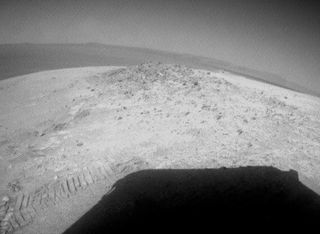
NASA’s resilient Opportunity Mars rover is rolling again after waiting out the harsh Red Planet winter for more than four months.
On Tuesday (May 8), the Opportunity rover moved its wheels for the first time since late December, NASA officials said. The rover drove about 12 feet (3.7 meters) downhill from its overwintering site, a spot on the rim of the huge Endeavour Crater that scientists dubbed Greeley Haven.
"Opportunity has finally moved for the first time since settling into our winter haven," said James Rice, a rover mission co-investigator at NASA’s Goddard Space Flight Center in Greenbelt, Md.
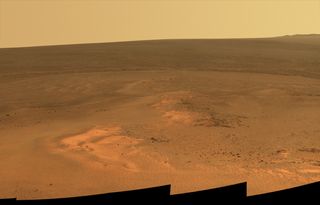
Opportunity parked at Greeley in late 2011 to take advantage of the outcrop's sun-facing slope, boosting output from the rover's dusty solar panels during the winter. But Opportunity remained awake and alert the whole time, checking out more than a dozen rocks within reach of its robotic arm.
The rover team also used radio signals from the stationary Opportunity to study Mars' rotation, work that could lead to a better understanding of the Red Planet's interior, researchers said. [7 Biggest Mysteries of Mars]
While Opportunity's long rest appears to be over, scientists will be keeping a close eye on the rover before sending it on any long journeys across flat ground.
"We will still need to monitor our power levels, however, and keep a northern tilt till around the middle of July," Rice told SPACE.com via email.
Get the Space.com Newsletter
Breaking space news, the latest updates on rocket launches, skywatching events and more!
Elusive phyllosilicates
Once power levels are sufficiently high, Rice said, the team wants to send Opportunity south to a spot along Endeavour's rim called Cape Tribulation. The goal is to look for elusive phyllosilicates — clay minerals that indicate a long-term interaction between water and rock.
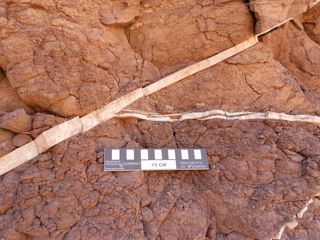
Clays form at higher — close to neutral — pH, in contrast to the acidic environments that produce sulfates, Rice said. As a result, clays suggest a "better habitability potential" on ancient Mars than sulfates do, he added.
"We are still in search of evidence for phyllosilicate minerals on Cape York," said Bill Farrand, a rover team member at the Space Science Institute in Boulder, Colo. Cape York is the name of the broad section of Endeavour Crater that Opportunity has been studying since August 2011.
Farrand said that measurements taken from Mars orbit indicate that phyllosilicates are present on Cape York, but in low abundance and in limited exposures. Mars scientists are also interested in further characterizing the veins which occur on the lower flanks of Cape York, he added.
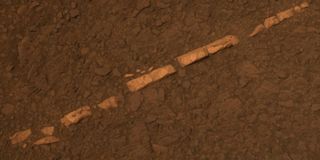
"Last year, we discovered that the vein 'Homestake' — analyzed with Opportunity's Microscopic Imager and Alpha Particle X-Ray Spectrometer instruments — was likely composed of the mineral gypsum. It would be good to examine other occurrences of those veins," Farrand told SPACE.com.
Ground-truthing
"We know there are clay deposits around as we can see them from Mars orbit. We haven’t seen the surface expression of them…so we haven’t confirmed from the ground that we could see these things," said Jim Bell of Arizona State University, lead scientist for the panoramic cameras on Opportunity and Spirit, its mute (and presumed dead) twin. [Mars Photos by Spirit and Opportunity]
Bell added that ground-truthing the clay deposits would be a big help for NASA's Mars Science Laboratory (MSL) mission. MSL's huge, nuclear-powered Curiosity rover is to touch down the night of Aug. 5 at Mars' Gale Crater.
"MSL is going to be running into this kind of thing too," Bell said. "So whatever we can learn about how to spot them from a roving platform, and how to characterize them, that’s going to feed forward into what MSL is going to do in Gale Crater as well."
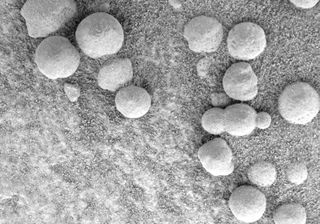
Bell said he also wonders whether Mars researchers might be surprised about what they find — as they were when Opportunity discovered strange hematite "blueberries" on the Red Planet.
"We could see hematite from orbit, but we were surprised how it was expressed on the surface. We had lots of ideas, but nobody predicted little blueberries," Bell said. "So maybe we’ll get surprised with the clays, too."
Motherlode
Rice said the rover team is excited about Opportunity's eventual journey to Cape Tribulation.
"Based on our orbital remote sensing data, the motherlode of phyllosilicates is located up on the spine of Cape Tribulation," Rice said. "So once we arrive there, Opportunity will get a shot at climbing some hills for the very first time in her lifetime."
Rice expected that such a climb by Opportunity might be similar to the ascent Spirit made when it tackled Husband Hill way back in 2005.
Spirit and Opportunity landed on Mars in January 2004. The two robots were expected to spend 90 days searching for signs of past water activity.

They found plenty of such evidence at their separate landing sites, reshaping scientists' understanding of the Red Planet's history. And the two rovers kept chugging along, far exceeding their warranties; NASA declared Spirit dead just last year, and Opportunity is still going strong.
Leonard David has been reporting on the space industry for more than five decades. He is a winner of last year's National Space Club Press Award and a past editor-in-chief of the National Space Society's Ad Astra and Space World magazines. He has written for SPACE.com since 1999.
Join our Space Forums to keep talking space on the latest missions, night sky and more! And if you have a news tip, correction or comment, let us know at: community@space.com.

Leonard David is an award-winning space journalist who has been reporting on space activities for more than 50 years. Currently writing as Space.com's Space Insider Columnist among his other projects, Leonard has authored numerous books on space exploration, Mars missions and more, with his latest being "Moon Rush: The New Space Race" published in 2019 by National Geographic. He also wrote "Mars: Our Future on the Red Planet" released in 2016 by National Geographic. Leonard has served as a correspondent for SpaceNews, Scientific American and Aerospace America for the AIAA. He has received many awards, including the first Ordway Award for Sustained Excellence in Spaceflight History in 2015 at the AAS Wernher von Braun Memorial Symposium. You can find out Leonard's latest project at his website and on Twitter.
